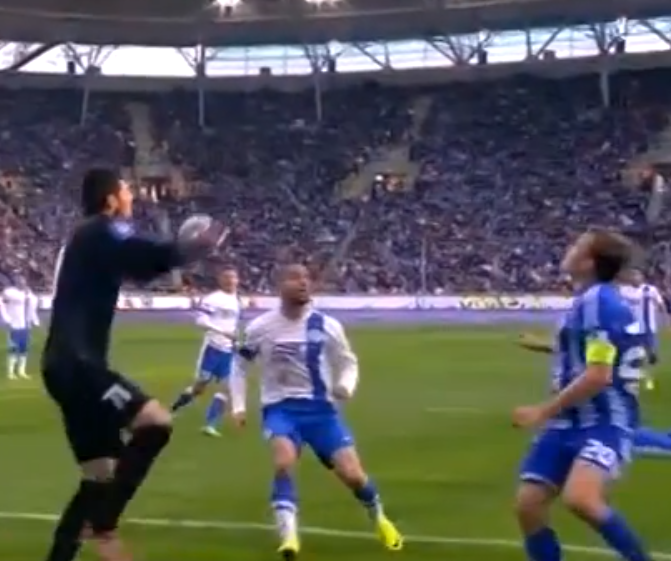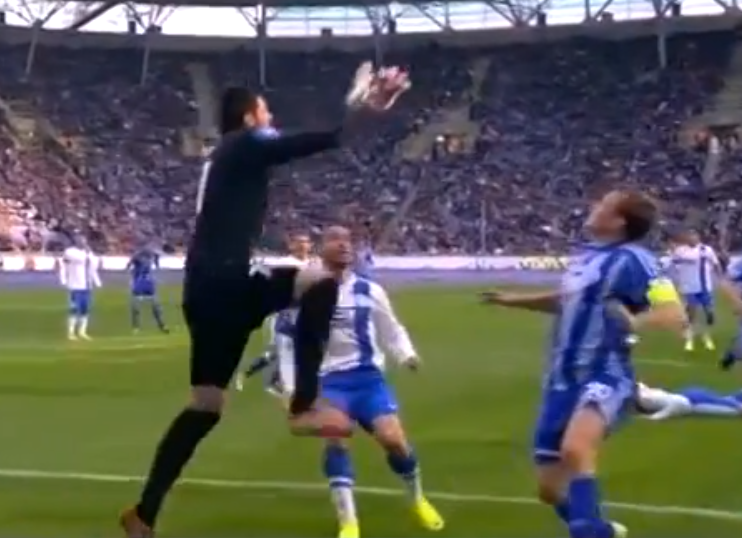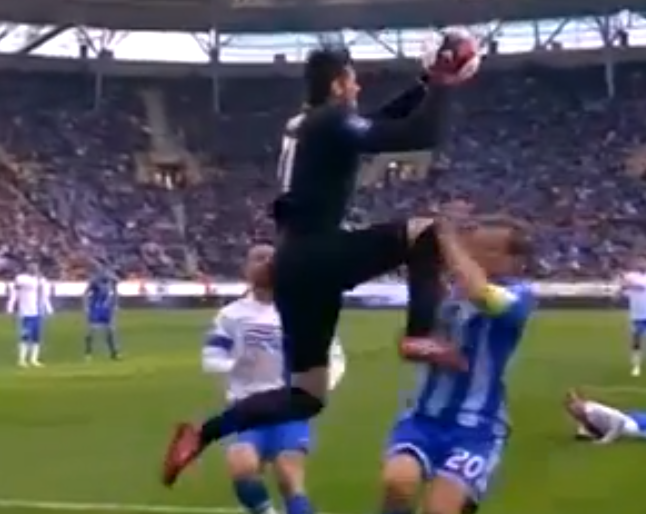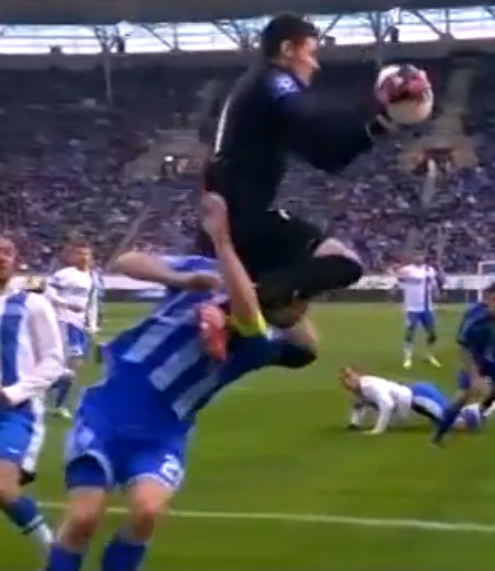Goalkeeper coaches will often tell their goalkeepers to protect themselves when dealing with crosses. But what exactly does this entail? How can a goalkeeper be more protected than he already is? We have seen countless times where a goalkeeper recklessly flies into a crowd and takes out a number of players, including his own teammates. But if a striker sneezes on a keeper he is called for a foul. So what is he protecting himself from?
The rise of the knee acts as a buffer to steady the goalkeeper mid-flight. If a goalkeeper is hit in the knee, he is still steady enough to make the catch. If he is hit in the chest or arms he could misplay the ball, resorting in a conceded goal. So protection is centered around protecting the goalkeeper from making a mistake. The raised knee will not protect the goalkeeper's safety. Only a careless challenge by the goalkeeper or opposition will endanger one another. If everyone goes up smartly, the risk of injury is minimal. I suppose one could argue that raising your knee would protect you from a maniac rushing in, but that is not only such a rare occasion but it will not save you. If you are to be bulldozed you will be bulldozed.
This past week, Ukraine witnessed a horrible collision in the Dnipro and Dynamo game.
This is not a freak accident. This is careless and extremely dangerous play by the goalkeeper. For those who say this is fair play, albeit incredibly unfortunate, they are ignorant of why a goalkeeper brings up his knee to attack the ball in the air.
If you google image "goalkeeper cross" you will see most of the time a goalkeeper does not raise his knee that high when going for a ball in the air. Bringing up a knee is a luxury that goalkeepers do not often have. Perhaps the ball is moving in the air, the goalkeeper misreads it, maybe he simply does not need to bring it up. On top of that, raising your knee helps you jump vertically. Yes, it helps you jump out, but it is aimed at getting the ball at the highest point in stride.
Bringing your knee up to waist-level is in a very specific situation.
- The goalkeeper is in a crowd or is about to be challenged in the air for the ball.
- The goalkeeper is attacking the ball and not looking to punch, but catch the ball. Otherwise his knee would get in the way from getting to the ball first.
- The goalkeeper has lined up the trajectory with his run and with catch the ball in stride on a forward line.
Let's revisit the collision.
You can see how out of the way Dnipro goalkeeper Denys Boyko goes to make the collision and how tense the thigh is to drive through Oleg Gusev's head. This has clearly gone past the line of protecting the goalkeeper and becoming a weapon. How could Boyko avoid this? By either twisting his body (preferably to the left) so his knee doesn't his Gusev's head or by not bring his knee up past his belly button.
A goalkeeper's technique should mimic that of a shinguard. The shinguard not only protects the shin of the person wearing it but the person who is kicking the shin. Obviously we could just wear metal plates and never have to worry about shin-related injuries but then every field player would constantly be breaking their foot on 50-50 challenges. A goalkeeper must protect himself as well as the other twenty-one players on the field.
Imagine if a striker did this to a goalkeeper. There would be outrage and likely paired with more than just a one game ban. Smashing a knee into someone's head is more dangerous than a two footed tackle. The responsibility of protecting the safety of others on the field belongs to everyone, including goalkeepers.




